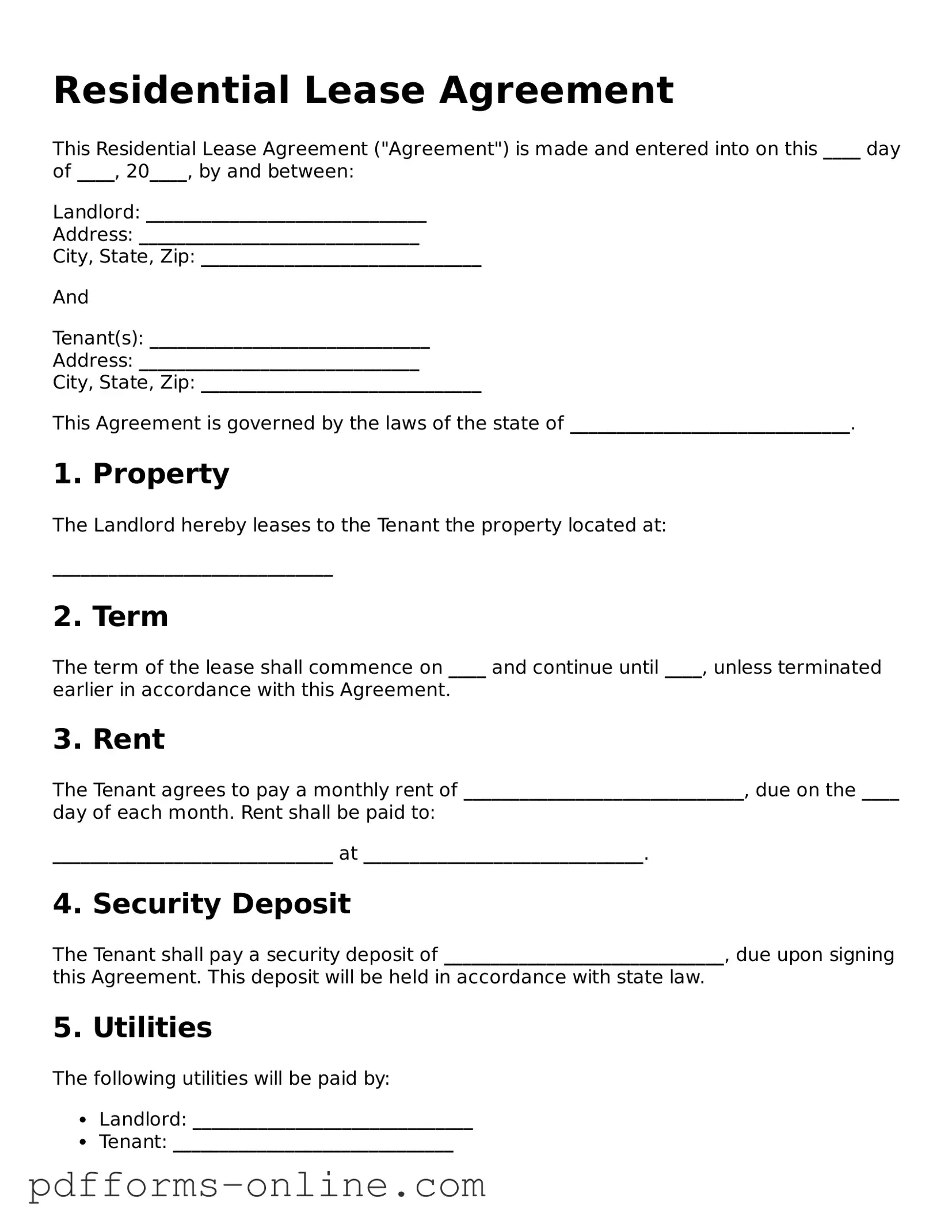Residential Lease Agreement
This Residential Lease Agreement ("Agreement") is made and entered into on this ____ day of ____, 20____, by and between:
Landlord: ______________________________
Address: ______________________________
City, State, Zip: ______________________________
And
Tenant(s): ______________________________
Address: ______________________________
City, State, Zip: ______________________________
This Agreement is governed by the laws of the state of ______________________________.
1. Property
The Landlord hereby leases to the Tenant the property located at:
______________________________
2. Term
The term of the lease shall commence on ____ and continue until ____, unless terminated earlier in accordance with this Agreement.
3. Rent
The Tenant agrees to pay a monthly rent of ______________________________, due on the ____ day of each month. Rent shall be paid to:
______________________________ at ______________________________.
4. Security Deposit
The Tenant shall pay a security deposit of ______________________________, due upon signing this Agreement. This deposit will be held in accordance with state law.
5. Utilities
The following utilities will be paid by:
- Landlord: ______________________________
- Tenant: ______________________________
6. Maintenance and Repairs
The Tenant agrees to keep the premises in good condition and notify the Landlord of any necessary repairs. The Landlord is responsible for maintaining major systems such as plumbing and heating.
7. Use of Property
The Tenant agrees to use the property solely as a residential dwelling and shall not engage in any illegal activities.
8. Termination
Either party may terminate this Agreement by giving at least ____ days' written notice to the other party.
9. Additional Terms
Additional terms may be added here:
______________________________
10. Signatures
By signing below, both parties acknowledge and agree to the terms of this Agreement.
_________________________________
Landlord Signature and Date
_________________________________
Tenant Signature and Date
This template provides a clear and engaging format for the essential components of a residential lease agreement.
